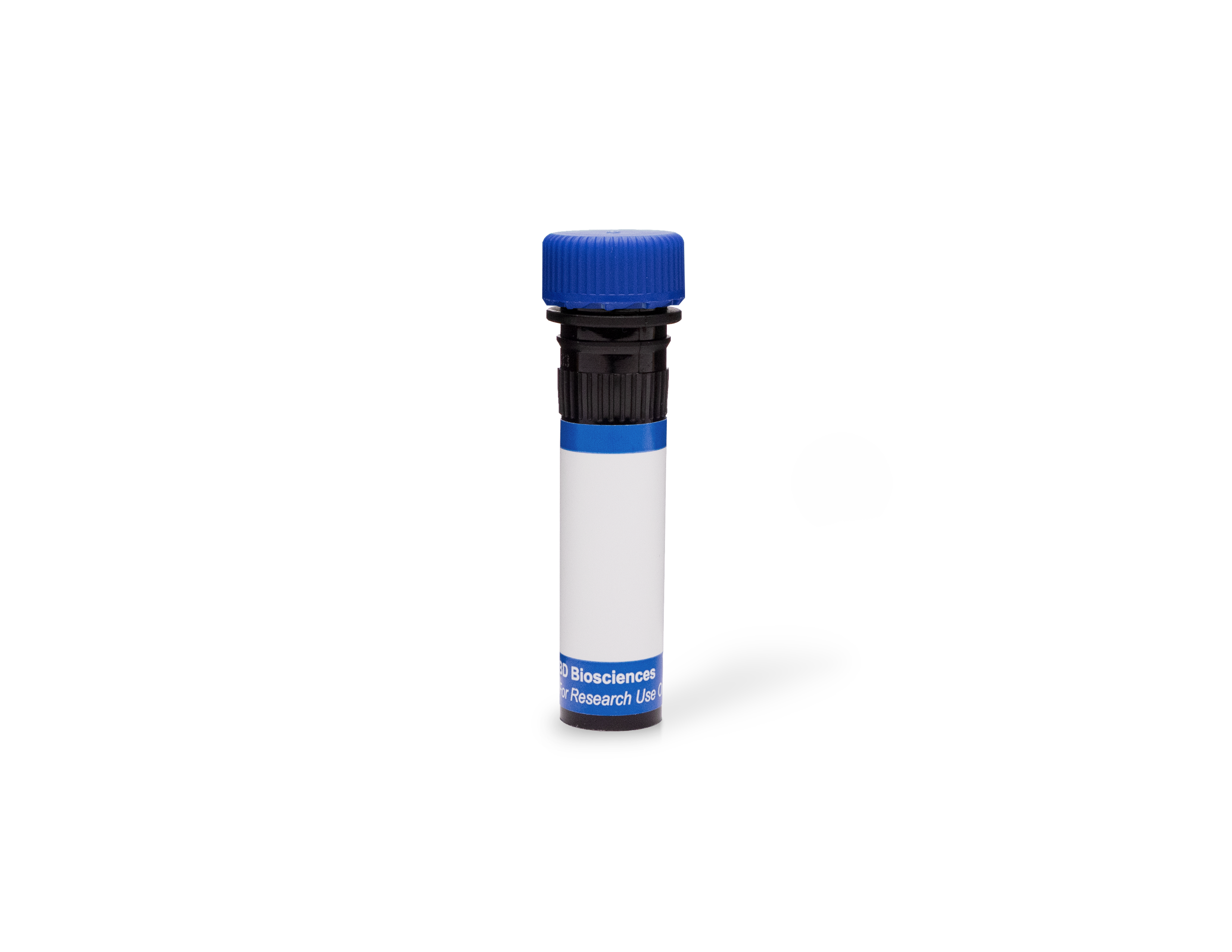



 下载产品说明书
下载产品说明书 用小程序,查商品更便捷
用小程序,查商品更便捷



 收藏
收藏
 对比
对比 咨询
咨询















参考图片
Expression of TNF by stimulated human peripheral blood mononuclear cells (PBMC). Human PBMC were stimulated for 4 hrs with PMA (5 ng/ml, Sigma) and Ionomycin (500 ng, Sigma) in the presence of Brefeldin A (Cat. No. 555029). Cells were harvested, fixed, permeabilized and stained with PE mouse anti-human CD8 (Cat. No. 555367) and either PE-Cy7 mouse anti-human TNF antibody (Cat. No.557647/560923/560678, left panel) or PE-Cy™7 Mouse IgG1 κ Isotype Control (Cat. No. 557646, right panel). To demonstrate specificity of staining, the binding of PE-Cy™7 Mouse Anti-Human TNF was blocked by the preincubation of the conjugated antibody with molar excess of recombinant human TNF (0.25 µg,Cat. No. 554618) and the fixed/permeabilized cells with an excess of Purified Mouse Anti-Human TNF (5 µg, Cat. No. 554510) (data not shown) prior to staining. Quadrant markers were set based on the autofluorescence and isotype controls.
Expression of TNF by stimulated human peripheral blood mononuclear cells (PBMC). Human PBMC were stimulated for 4 hrs with PMA (5 ng/ml, Sigma) and Ionomycin (500 ng, Sigma) in the presence of Brefeldin A (Cat. No. 555029). Cells were harvested, fixed, permeabilized and stained with PE mouse anti-human CD8 (Cat. No. 555367) and either PE-Cy7 mouse anti-human TNF antibody (Cat. No.557647/560923/560678, left panel) or PE-Cy™7 Mouse IgG1 κ Isotype Control (Cat. No. 557646, right panel). To demonstrate specificity of staining, the binding of PE-Cy™7 Mouse Anti-Human TNF was blocked by the preincubation of the conjugated antibody with molar excess of recombinant human TNF (0.25 µg,Cat. No. 554618) and the fixed/permeabilized cells with an excess of Purified Mouse Anti-Human TNF (5 µg, Cat. No. 554510) (data not shown) prior to staining. Quadrant markers were set based on the autofluorescence and isotype controls.






 危险品化学品经营许可证(不带存储) 许可证编号:沪(杨)应急管危经许[2022]202944(QY)
危险品化学品经营许可证(不带存储) 许可证编号:沪(杨)应急管危经许[2022]202944(QY)  营业执照(三证合一)
营业执照(三证合一)